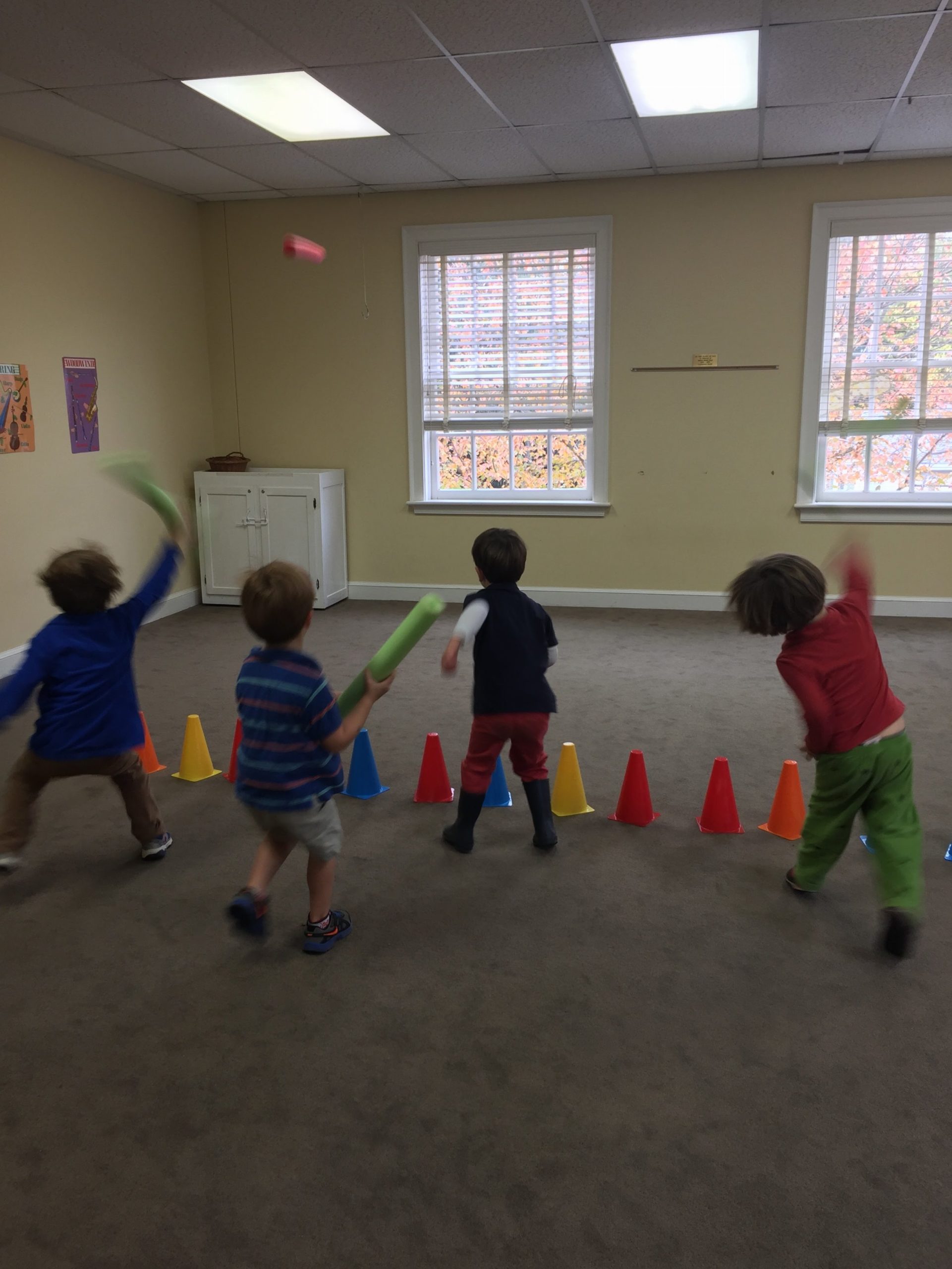When we think of fundamental sports skills, we might think throwing and catching. Yes, they are fundamental to almost every sport and they are a critical piece of physical literacy, but simple throwing and catching goes much deeper than football or basketball. Believe it or not, kids need this skill to learn.
Check out this group of 3 and 4 year olds above. They are throwing “javelins.” Ok, their form isn’t perfect, but at this point who cares? They are developing critical learning skills that will make them better readers and writers when they hit elementary school. How? First, children need fine motor skills to be able to hold a pencil. Fine motor skills are only as good as the underlying strength in the hand. These kids are gripping a noodle that is way to large for their hands, and holding it tightly in order to propel it to the other side of the room. Second, they must judge where their hands are moving in order to send that javelin where they want it. That judgement is the brain working with the body to move an object, just like the brain needs to tell the hand to move a pencil to form letters, or to move the eyes across a page to read. This is motor planning: where the brain and the body work together to establish new patterns that soon become habitual. But motor planning is only as accurate as the conversation between the brain and the body. We need kids to move their bodies through space so the brain can learn how the body moves and judge it’s place in space.
These kids are also using what Josef Pilates called the “powerhouse” which is what we call the core. He called it the powerhouse because everything the body does starts at the core and moves out. The stronger the core, the more smooth moving and efficient the appendages: hand, arms, legs and feet. By using as much force as they can muster, these kids are strengthening core muscles to heave the javelin as far as possible. But children also need strong powerhouses to be able to sit still in a chair and learn when they get to elementary school. More often than not, the child who is wiggling in his chair and not paying attention is uncomfortable sitting in that chair because his core can’t hold him up. He certainly isn’t going to pay attention to his teacher if he can’t get comfortable.
Catching is an equally important piece of motor planning and hand-eye coordination that we need for reading and writing. But the most important message in all of this is that children gain critical skills for the classroom by playing. Catching and throwing is FUN! And kids just want to have fun! Keeping that throwing and catching going and allowing them to practice this fun skill will help them build that strong foundation they need for classroom skills!
Tech Diet 30×30 Challenge
Know someone who might need a tech reset? Know a family struggling to get screen usage under control? Our Tech Diet 30×30 Challenge might be just the ticket to guide and support those looking to make a change in the way technology is being consumed by the ones they love. From weekly support emails, downloadable tools and tons of tips and tricks, this family based challenge to limit junk tech to only 30 minutes a day for 3o days has all the fixings for success.
